SAKELA IN DEPTH
SAKELA AS A DANCE:
Sakela is the cultural dance and festival of Kirat Rai. Dancing Sakela, the Suptums are prayed to save the crops. Sakela starts when the Nakshong (a Rai priest) offers Raksi (liquor made from fermented rice) from Chindo sprinkling around the Sakela Thaan (place where Sakela is established). The Sakela Thaan is established by using stone, bamboo branch and banana leaves. Sakela is known as Sakenwa Lak. Sakenwa means Sakela and the Lak means dance in Rai language. In the beginning of the Sakela dance, the Nakshong completes the ritualistic activities of the dance, like verbally praying and glorifying the Thaan and sacrificing animals.
The Nakshong chants the The Mundhum dancing around the Sakela Thaan. He sprinkles the raksi from chindo around and on the Than. He recalls the Suptums and the forefathers. When the Nakshong performs the starts dancing, other Rais follows him. The dancers dance holding Chamar (yak’s tail), Seula (bunch of leaves), Khurmi (scythe), bow and arrow, Dhol and Jhyamta (traditional musical instruments sounding like tiger’s voice). The musical sound of Dhol and Jhyamta makes people forget the sorrows they have. There is peace in nature. Even worshipping nature provides peace to everyone.
The Nakshong appears in unique clothes and seems unique and identical among dancers. He wears garland of coins and feathers of birds in head. His uniform differs from other dancers. Especially, he wears white colored clothes. And he puts different types of ornaments on his body. The garland is kept around the body. The crown with the feathers of the birds is the attraction during the dance. During the Sakela the Nakshong is the leader. Other dancers wear the traditional uniform and the ornaments. The Sakela is performed in the circle. It needs wide ground. Even childrens can dance Sakela. But non-Rai are not allowed to dance. They can only observe the dance from a distance.
The celebration of Sakela falls twice a year, once in Baishake Purnima called Ubhauli and another in Mangsire Purnima known as Udhauli. The time between Baishake Purnima to Mangsire Purnima is called Ubhauli. Similarly, time between Mangsire Purnima to Baisake Purnima is called Udhauli. Ubhauli and Udhauli are associated with the changing of the season. Ubhauli is the time of planting. The farm is muddy because of the rain. Similarly, udhauli symbolizes the time of winter and time of harvesting new crops. Sakela occurs according to the change in nature. So, it is identical with nature. In other words, no nature no natural changes and no natural changes, no Sakela. Therefore, Sakela is deeply intertwined to nature.
The bird Karyangkurung plays a significant role in Ubhauli and Udhauli. According to the Mundhum, Karyangkurung belongs to the clan of forefathers. In the time of Ubhauli, Karyangkurung flies toward the hilly area messaging- it is the time to plant new crops. Likewise, in the Udhauli, Karyangkurung flies down to the Terai region suggesting good time for harvesting and storing the crops. Ubhauli means up.
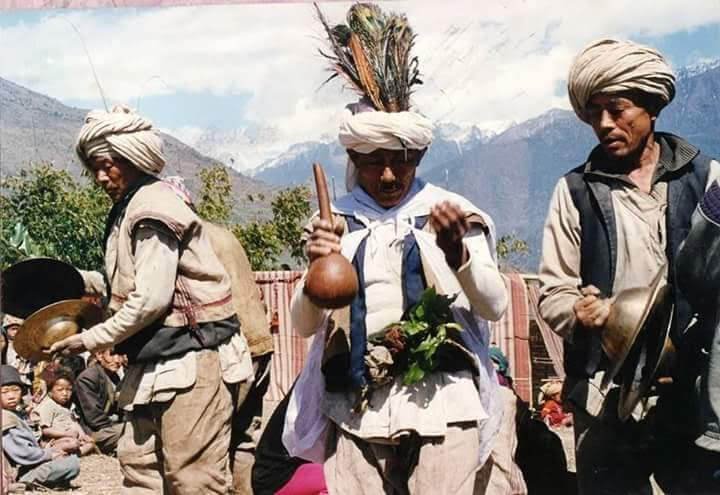
And, Udhauli means down. In the time of Ubhauli, Terai region is hot and Karyangkurungs cannot settle there. They shift to the hill side. And in the time of Udhauli, it gets down to the Terai because of the cold weather in hillside. They fly in group to hillside at the time of Ubhauli and flies back to Terai at the time of Udahuli. So, Karyangkurungs is associated with the nature. Their movement according to the change in season is believed designed to suggest the Rai community about timing of farming and harvesting. Good harvesting depends on the good understanding of climate change. And, the bird Karyangkurung provides the good knowledge of natural change or climate change. Kirat Rai people, in order to have good harvest, follow the nature according to the movement of Karyangkurungs.
The bird Karyangkurung is the mythological character that symbolizes unity among the Rai community. Karyangkurung in group makes a harmonious fly in the sky. Their togetherness in the sky is tuneful. The movement of the wings and body sets rhythm as of music. Similarly, the Rais make a circle of unity in Sakela dance. The unity of dancers is seen even in the every gestures and movements. This dance resembles the flying Karyankurungs too.
In Sakela dancer follow the musical sound of Dhol and Jhyamta. The gestures of feet and hands depend on the music. If the rhythm of Dhol and Jhyamta is made fast, the dancers speeds dancing steps fast. And, if the musical sound of Dhol and Jhyamta is slow, the dancers seem dancing slowly.
Sakela is danced according the Sili. And there are many Silies. A Sili is a dancing method or a step in Sakela. The dancers cannot dance in many Silies at once. They dance each and every Sili one by one in a chronological order that follows the story of the story of this universe and forefathers. Every Sili has a story that the Mundhum tells about the origin of human being and the world. In other words, the Silies are designed to tell the story of the origin of human being, the world and glorify the fore father and their deeds. So, each and every Silies should be danced coherently so that the dance could tell the story meaningfully and spontaneously. For this reason, dancing Sakela is a very difficult job and it needs a lot of practice. Dancing Sakela is a natural and cultural phenomenon or the lifestyle of every member of Rai community. From the very childhood of every member of this community has experienced Sakela. They have rehearsal it a lot before taking part in this dance. This is called Sop Lak and Sopthek Lak in Rai language. Sop Lak and Sopthek Lak mean the rehearsal of the Sakela. Sop Lak and Sopthek Lak are popular in the Rai community. They train the dancers to help them perform well. They fall a month before of the Sakela.
Dancing Sakela is different according to the place and sub clan of the Rai community. For example, the Rai of Bhojpur dances Sakela differently than the Rai of Khotang. The Rai of Solukhumbu, Sankhuwasava, Okhaldhunga, Dhankuta and so on differs in dancing style. But, the sole aim of dancing Sakela does not differ according to the place and sub clan.
In Bhojpur, Sakela is identified from the Pachha of Rais like Hatuwali, Aamchoke, Dilpali and Chhinamfule Bantawa silies. Likewise in Khotang, the Sakela is identified as Chamling, Dumi, Koyu and Puma. In other words, if a group of people are dancing Sakela in the fast beat of Dhol and Jhyampta, people says- this is Chamlinge (of Chamling) dance. Likewise, the dance differs in the slight modification of dancing steps or the sillies. In Solukhumbu district the Sakela is known as the Segro sili. Segro is very popular in Bahing Rai community.
Though there are dissimilarities in the Rai sub clans, they share the same belief and ideology and worship the same God. All the sub clans believe that the Karyang kurungs are their forefathers. They worship the Sakela with the same motto. The stone is spiritualized in the Sakela of each and every sub clans. Even all the writers share same methods of worshipping Sakela. All of them dance the Sili spiritualizing the stone as an image of God. They use the same musical instruments and things that need in Puja. The lingual differences among the sub clan have no effect in it. Even all the writers share common characters as the forefathers in their story of the origin of Sakela. They believe that the tiger, bear and the man were the children of the same mother Sumnima.
Udhauli Puja falls at a time when the crops are ready to harvest. The crops are not allowed to consume before they are offered to the ancestors. Offering the new crops to forefathers is called Nwagi. After the new crops are offered to the forefathers with respect, it is believed ready to consume. Here, the forefather equally signifies stone or the nature.
Beside the new crop, banana leaves are very necessary in Udhauli puja. They are needed to decorate Puja Than. Chindo, bow, arrow are other necessary things. Banana leaves cannot be substituted by other leaves or anything. In other words, it is a must in Udhauli Puja. Animals especially cock is sacrificed to please the ancestors. Kirat Rai do believe that all good crops are possible due to the blessing of ancestors. So, they make their dead forefathers happy by offering new crops first to them. They dance and enjoy in the name of forefathers. They also seek blessing of the forefathers in the occasion of Udhauli. This celebration is called Sakela, Udhauli Puja.
The method of worshipping Udhauli and Ubhauli is almost similar. But in Ubhauli bow, arrow and main pillar are not worshipped. As it is the time of new planting, Rai people celebrate the Sakela keeping the new planting in the mind, not hunting. In Ubhauli, Sakela is danced wishing for better crops. They wish and ask for better rain by worshipping the forefather Chawamang. Chawamang is the deity of the rain. And, they try to make the deity please.
In both pujas, Sakela is the central attraction. The Sakela is the central attraction among all the Kirati festivals. This festival is associated with the mother Sumnima and the agrarian system. The agrarian system itself is significant for the human beings. It is a way of surviving. That is why, Kirati people celebrate the Sakela. The Rais dance Sakela to please Sumnima-Paruhang and the ancestors in the occasion of Ubhauli and Udhauli forgetting everything. Every dancer is energetic and the energy is believed comes automatically through the musical sound of Dhol and Jhyamta. Though there is crowd or mob due to Sakela dance there is oneness. The purpose of all Kirat Rai is one, to please the deities through the dance.
During the dance, the excited young people forget each and every tension. All dancers are busy in catching the sili exactly from the Sili master called Silimoppa. Silimoppa is the person who is the expert in dance. Everybody follows him while dancing Sakela. Nakshong is not always and to every group available to be followed in the dance. In the absence of Nakshong, Silimoppa leads Sakela dance. In Sakela, there are many groups and most of them is led by Silimoppa.
In Sakela the vibrant shake of Silimi (a kind of knife) and the Chamar indicates the change in Sili or the dancing steps. These things are on the hands of Silimoppa. The vibrant shake of Silimi and making upper hands show that there is change in Sili. The Sili dancers should understand the symbolic meaning and activities of the team leader. The musical sound of Dhol and Jhymta helps the dancers to catch the silis or the steps exactly.
All the dancers are disciplined. They are not allowed to dance as they wish. The dancers must be under the norms and values.
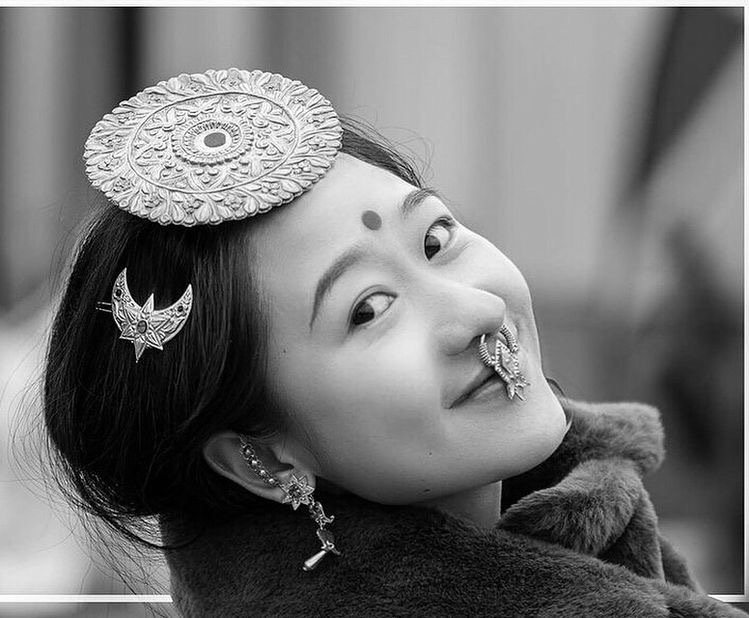
The women or girls wear beautiful traditional uniform and ornaments. The men wear traditional uniform. The folk song of Sakela is one of the attractions. Soisoila ho soisoila...........hurra ha ha ho hurra ha ha. Soi dhole soi arko dhole khoi... are some of the fundamental songs of Sakela.
Soisoila, one of the popular words in the Rai folk song of the Sakela is taken from the name of female suptums. So, the Kirat Rai takes her name to recall her through the song. Soisoila is popular in Khotang. And the dancers, from Bhojpur use Semuna instead of Soisoila. Semuna follows at the last part of each sentence. A glance of the song from the book of Chandra Kumar Hatuwali, Sakenwa,
Aakasaiko kalo mailo aahai badalule hoki semuna
Jethi vanda kanchhi ramri aahai gajalule ho ki semuna Aakasako gadyang gudung aahai patalaiko vuichal semuna Marne jati kailasaima aahai banchneko yo chhal semuna Aakasaiko jhilkemilke aahai ek tara khasai deuna semuna Yo man jasto tyo man vae aahai dilma basai deuna semuna.
The Bantawa dancers sings:
Cheptesun kanma kumkumko Vet vayo aaja thumthumko Soi soila ho soi soila
Salala pani nau muni
Binti hai garchhu pau muni
Soi soila ho soi soila.
The song is sung beautifully by the chorus of dancers. They pick up any type of subject like love, harshness of life etc. immediately, convert it into the song and sing it beautifully. In Sakela, songs are sung when the dancers finishes dancing a particular
Nau mati baja dhol bajyo Etikai belama yo riti vayo Soisoila ho soisoila
Such folk songs are the heart of Sakela dance. These songs provides refreshments to the dancers in the after dancing every Silies.These folk songs often change into question and answer form between the groups of boys and girls. Especially, the group of boys tries to lure the groups of girls. They express their love to the girls and ask their hand for life. But the groups of girls often deny their proposals through song and mock them of being unqualified to get their hand. Such kinds of song regarding love, denial and attraction to each other are natural phenomenon that create excitement, entertainment, humor and energize to dance. Without these songs, the Sakela dance will like the curry without salt. In all the songs there is the connection of the natural phenomena. Moreover, through the song, the boys and the girls get chance to understand each otherkeep the feelings to the girls. Sakela is also one of the occasions where girls and boys have the chance to select and get engaged each other.
The silies in Sakela:
There are different Silies. The sillies can be found of many types. They can differ according to location, language, clan and sub clan. The name of the Sillies can be found different according to place and language. But the meaning of all the Silies is same. Chandra Kumar Hatuwali in his book Sakenwa: Kiratharuko Mahan Chad, names some of the sillies. They are: Mangchhama Sili, Chhongwalak Sili, Longlenchip Sili, Narokwa Sili, Berawa Sili, Chasumkopma Sili, Parulak Sili, Rohompara Sili, Chanukama Sili, Chathoma Sili, Kongthokchapak Sili, Narawa Sili, Sumnima Sili, Tayama Sili, Khyama Sili, Sumni Sili, Wapa Sili, Ngasa Sili (fish), Fakleawa Sili and Chasuma sili.
All the Sillies are dedicated to god, nature and animals. Each Sili has the touch of nature. For example, Wapa Sili is dedicated to Cock and has got a glorious space in the Mundhum. By dancing this Sili, the contribution and the role of cock in human life is glorified. Similarly, dancing Ngasa Sili, the role of fish in nature and its role in the human civilization is glorified. Animals like cock, fish and so on are taken as God and worshipped. In other words, Kirat Rai people are nature worshipper and they only worship what is found in the nature.
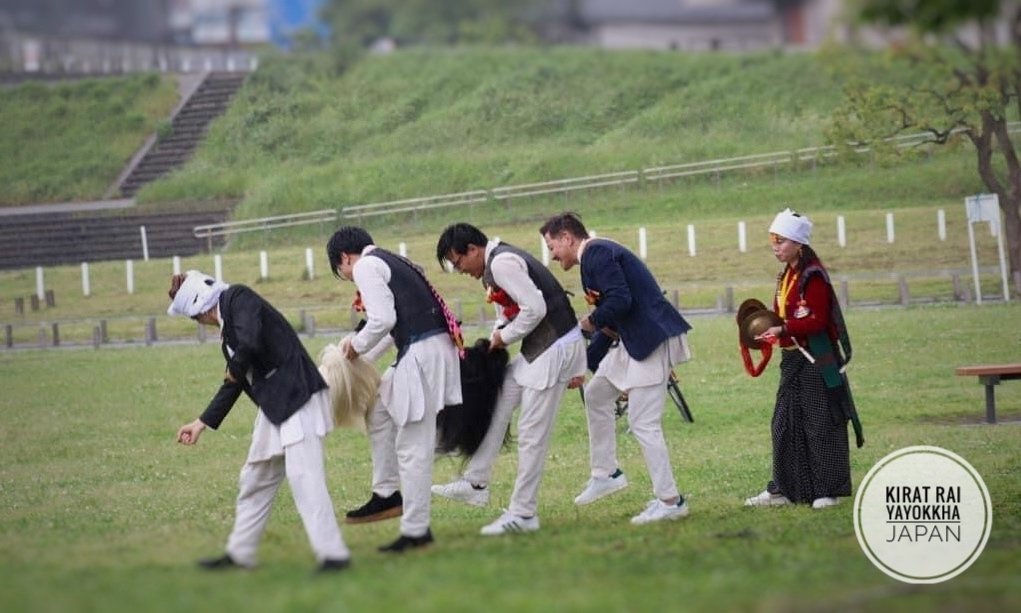
The writer Bhakta Kumar Rai also explains some of the silies in his book, Sakhewa Kina? They are Faklewa Sili, Chasum Sili, Shikiwa Sili and Narokwa Sili. All the Silies are dancing methods of the Sakela. Faklewa Sili is supposed to be the first Sili of the Sakela. According to The Mundhum, this Sili was originated sili earlier than any other Silies.
Chasum Sili is the Sili of farming. It is the Sili of the nature. Shikiwa Sili is the Sili of art and handicraft. In this Sili, the dancers act as making and knitting the cloth. They try to continue and imitate in the dance. They imitate the handicraft and the art of the forefathers which they did in the past. Narokwa sili is the Sili of the birds. Narokwa is the name of the bird in Rai language. The bird Narokwa is Karyangkurung.
Chasuma Sili in Sakela:
Chasuma Sili is one of the dancing methods in Sakela. “Chasuma” refers nature. In Chasuma Sili, the Rai people treat the natural elements like earth, soil, water, air, fire and sky as human beings. It deals with the agrarian system and talks about the nature.
In Hindu mythology, there are Pancahamahabhut. They are water, fire, soil, wind and sky. Because of these elements, the world is possible. Similarly, Kirat mythology also believes in these elements water, soil, air, fire and sky. Mundhum believes that all these things are the primary resource that made this world possible. The tiny particles of these elements of united together and make this organic world possible. Kirat people believe that Sumnima and Paruhang made these elements.
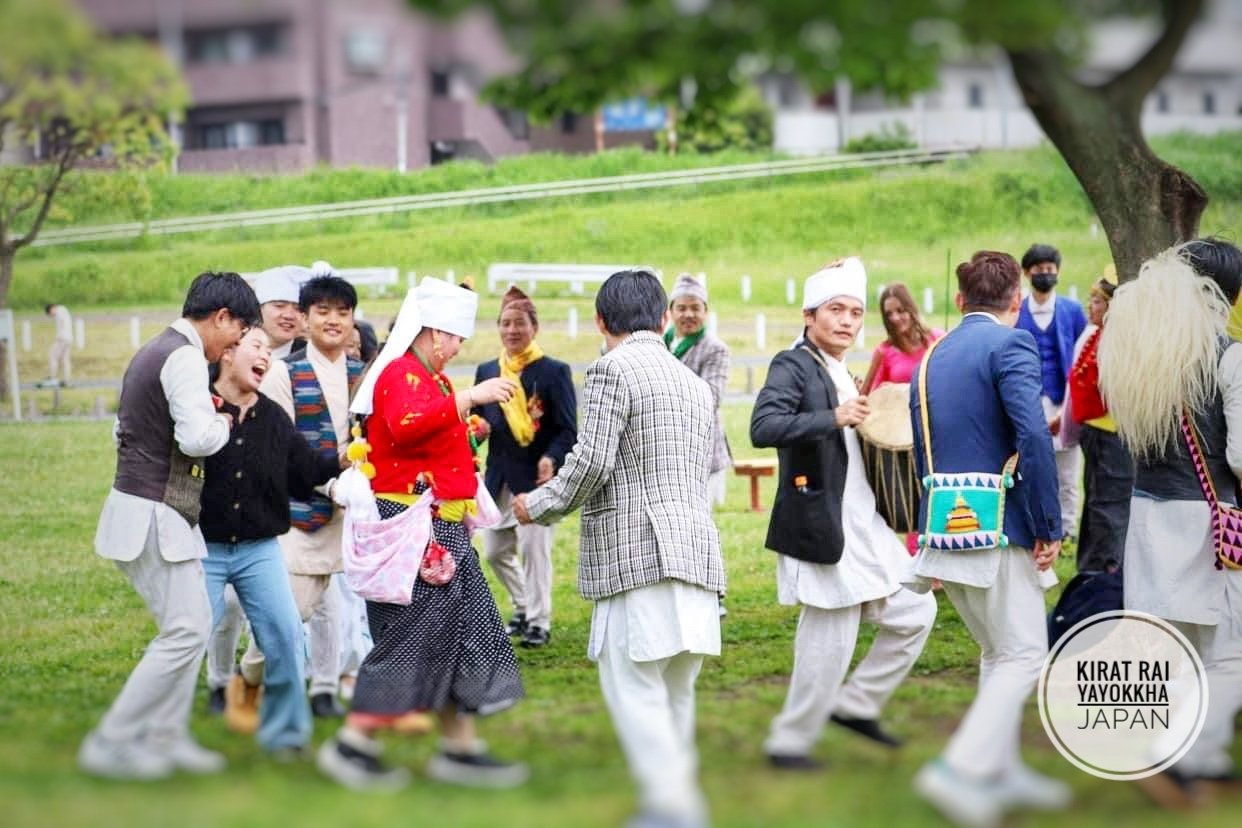
Chasuma Sili is danced to worship especially river, stone, earth and hill. They are treated as living being. All these things are glorified by animating them because they are the elements that made all the lives possible. So Chasuma Sili is the major part of Sakela. It is the most energetic, exciting and entertaining part of the dance. The expression and the physical activities during the dance are well-performed. The circular shape of the dance symbolizes the unity between these elements that made the life possible. It is believed to be a god-gifted dance that makes people forget every trouble and feel relaxation.
Chasuma Sili is all about agrarian system. Writers relate it with Paruhang and Sumnima, the first beings who made this world possible, taught their children about the agrarian system. So Kirat Rai people dance and celebrate the Sakela in the name of god i.e., Paruhang and Sumnima.
Chasuma Sili is especially dedicated to Sumnima, the mother. The Rai community spiritualizes the dead ancestors on the stones before starting Sakela. They worship the stone like the human being and offer food and sacrifices animals. They also see spirit in the river, in the hill, in the earth, in the air, in the stone, in the fire and everywhere in the nature. So, they treat the whole nature as a human being. They sacrifice cocks, offer Akshata (rice), Bechhuk (ginger), Wasim/Arakha or hengma (alcohol) to the earth, the water, the fire, the hill and the whole nature believing that these things are consumed as human beings do.
Chasuma Sili is performed twice in a year, once in the Ubhauli Puja or Sakela in the day of Baisake Purnima and another in Udhauli Puja or Sakela in the day of Mangsire Purnima. In the day all the people from Kirat Rai community seems assembled into one and pray together with the Nakshong. All the participants offer Akshata (rice), Bechhuk (ginger), Wasim/Arakha or hengma (alcohol) in the Puja to the god and try to make happy the Suptums. They, by praying, wish the blessing of Suptums for the better life and better harvesting.
All the participants sing the Risiwa (song) while performing Puja. The Nakshong enchants the Mundhum and Rai people offers Rato Bhale (cock with red colour) in the Sakela Thaan which is sacrificed to please the God. The hunter endowed with the bow and arrow enters the Sakela Than first. A person with sword and knife follows him. After them the Nakshong enters Sakela Thaan. The nakshong is with White Pheta (white cloth covering the head by folding). He holds Soleima Chindo on the right hand and Khokpi (small knife) on the left. Many people sorrounds the Sakela Thaan and the Nakshong. They sing Risiwa and walk together toward the Sakela Thaan. People of every age even the children are allowed to enter and are present at the ceremony.
Two girl carrying Sambicha Pandur (millet), Wasim (homemade beer), hengma (homemade alcohol), Chayak (rice), Kaglogma (maize), Bechhuk (ginger), Akshata (rice) and the flowers in Thunche/Dhobe (typical almost cylinder shaped basket made from bamboo) enters the Sakela Than. After them the group of the dancers with dhol and jhyamta enters and starts dancing forming a circle around the Sakela Than. They move around the Sakela Thaan singing the Chhamlusa (song about the crops) with the musical sound of dhol and jhyamta.
The ultimate goal of dancing, singing and sacrificing Rato Bhale is to please Paruhang and Sumnima. The Nakshong and the elder people pray Sumnima and Paruhang singing Chhamlusa and enchanting the Mundhum. The group rounds the Sakela Than three times dancing and singing and the Sakela begins formally. Then they come out from the thaan to the dancing ground, which is wide and green. The whole group sings the Chhamlusa, song about the chasuma sili. They sing about the agrarian system as well. The dancers dance acting the farming. They express how to plant and how to harvest. They express it through the sign of hand and foot.
At the beginning of the dance, the dancers cut down the forest. Then they seed the plant. They try to make feel that they are expressing as the real. Then they uproot the plant, as it is real. They make over doing all the works of farming. Finally they harvest and act as they are eating the food after cooking. And they again pray for the Suptums.
The Nakshong and the dancers pray to the Suptums. They do not forget that these all the crops are possible because of the blessing of the Suptums. The Nakshong makes a promise to offer the foods and new crops again in neat year. He requests with the Suptums to protect from the trouble. And he requests to bless in upcoming days. All the dancers offer new thing to the Suptums while the Nakshong enchants the Mundhum. All of them make a wish to be blissful, powerful, wealthy and healthy. The dancers and the Nakshong dance singing the Mundhum. While they dance they are totally dedicated to the Sumnima and Paruhang. It is the one of the way to make happy of their forefathers. The Rais believe that their forefathers eat the foods offered. They, in this way, treat forefathers as living being. So Chasuma sili or the Chasum Lak is the Sili dedicated to nature. Therefore, this Sili is embedded with full of ecological consciousness.
The things like chindo, three stones, bow and arrow for the preparation of the Sakela (Bhume Puja) are used in the ritual. Besides it, there are many cultural and traditional items like Raksi, Jand, fruits, and crops, which are offered to the god.
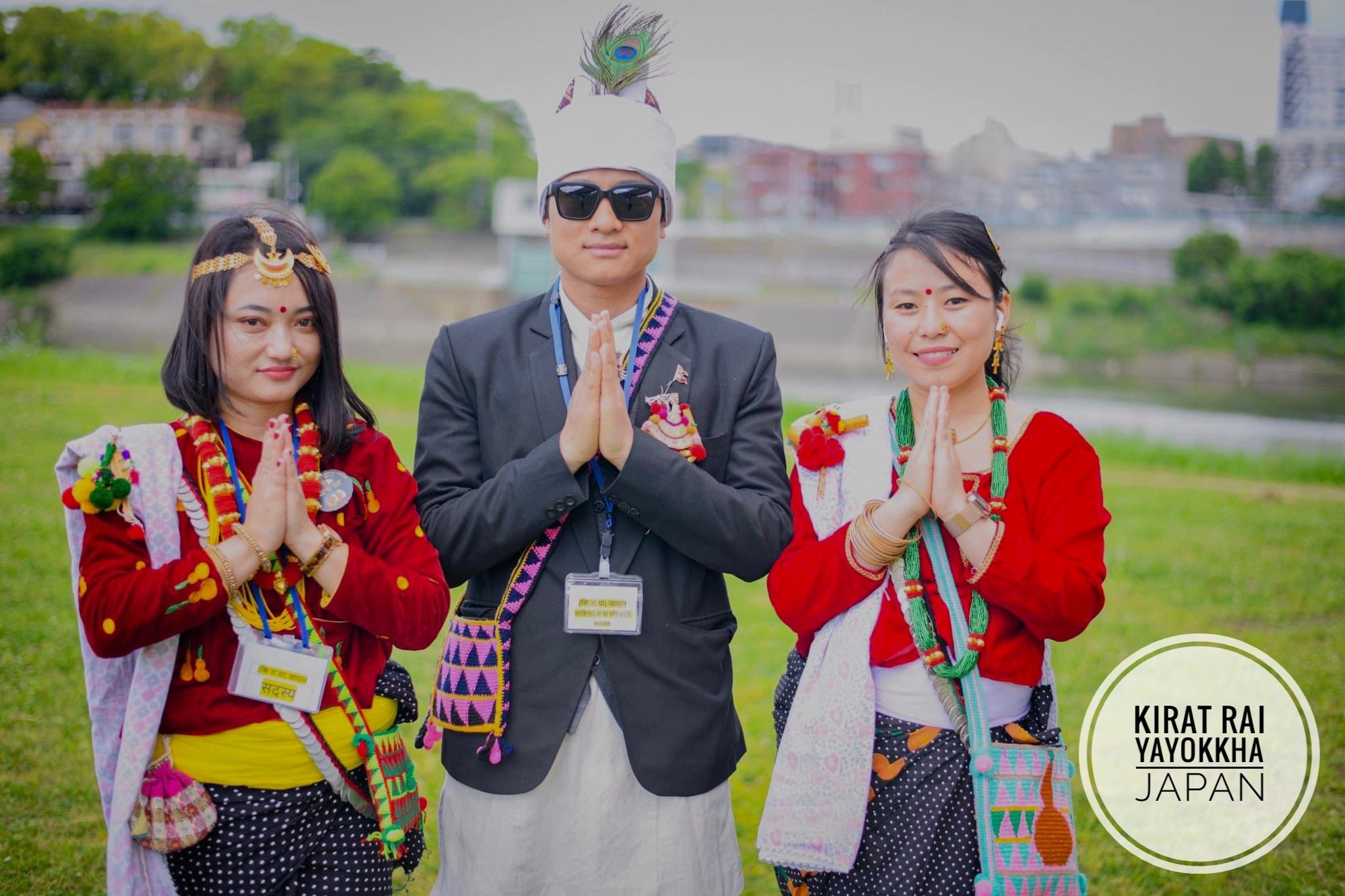
According to Kirat mundhum, Kirat Rai is nature worshipper. They worship the nature and it’s a must phenomenon. They are called Prakriti Pujak (nature worshipper) and Bhumi Pujak (earth worshipper). Bhakta Kumar Rai in his book, Sakenwa Kina? Explains:
According to Chasuma Sili, when Paruhang and Sumnima origined human beings, Paruhang taught them to destroy the forest and plough the farm. Similarly Sumnima taught her children for seeding on the farm for their food. In this sili the dancers act in the circle imitating the steps of agrarian system by the help of the dance leader. The steps like destroying the forest, plaughing, seeding, uprooting, planting, weeding round the plants, cutting down, heaping, chaffing, drying, sifting and to act and imitate of eating rice and to put inside of pocket. (17)
In the above lines, Bhakta Kumar Rai considers Chasuma Sili as natural imitation and dedication towards it. There is pervasiveness of the nature in Chasuma Sili. Likewise, Chandra Kumar Hatuwali also remarks Chasuma Sili in Sakela is as the imitation of the nature and its worship. In his book Sakenwa: Kiratharuko Mahan Chad, he reasserts the very fact:
Sili is the heart of Sakela. It is the method of Sakela dance. It becomes different according to place and caste. There is the change in the movement of hand and foot according to the change of Sili. The activities of nature, animals and social activities are imitated by the Sili along with the dancers. The sillies are named as the natural elements. (13)
Chandra Kumar Hatuwali further says about Chasuma Sili:
Chasuma sili is also called Sumnima sili or mother Sili. According to Kirat mythology Sumnima is the earth and mother of Kirat Rai. She is worshipped with great respect as the first mother of agrarian system. The process of agrarian system is pervasively found in Chasuma Sili. The steps like destroying the forest, ploughing, seeding, uprooting, planting, weeding round the plants, cutting down, heaping, chaffing, drying, weighing and to act or imitate of eating rice and to put rice inside the pocket are basic elements in Sili. (16)
Each Sili is about the natural aspects. In the above-mentioned lines Chandra Kumar Hatuwali makes clear that Chasuma Sili rounds surrounding the natural sources. The presence of natural elements in each Sili makes clear that Sakela is the festival of the nature.
Similarly, Tanka Bahadur Rai, in his book Kiratharuko Dharma Ra Sanskriti- Samchhipta Adhyayan, wrtes, “Sakela is the festival of Kirat Rai and it is based on natural Kirat mundhum” (48). Here, Tanka Bahadur Rai thinks nature is the base of Sakela, so it is very clear that nature is very important for Kirat Rai.
Another writer Gangaraj Rai (Hatuwali), in his article “Rai Samajma Chandi Naach Harsa Ra Umangako Jagaran”, says, “Even though there is difference among the Rai people in accordance with the place, they celebrate Sakela in the same way and the Sakela is based on agrarian system and natural aspects” (10). Here, Gangaraj Rai (Hatuwali) also explains that nature is inseparable aspect in the Sakela, a festival of Kirat Rai.
Like other writers, Bayansingh Rai, in his book Utpati Ra Paramparaka Chamling Mithakharu, remarks, “Kirat Rais believe that everything happens in this world because of the nature. So, Kirat Rais worship nature and follow Sakela Sili oriented to the nature and they believe that life is possible because of the nature” (37- 38). He too thinks that nature is as important as our life.
Since nature is the most important aspect in Rai community, Om Aastha Rai, in his article, “Sanskriti, Kirat: Shaharma Sakela”, writes “Though there are various Sillies in Sakela, the only purpose of sillies is to worship nature and its aspects” (48).
According to all these writers, the Sakela is mostly oriented to the nature. It is very clear that it is the festival of nature. Especially, Chasuma Sili is nature oriented. It is all about the ecology. Organism prevailing in Chasuma sili is the manifestation of the ecological awareness of this community.